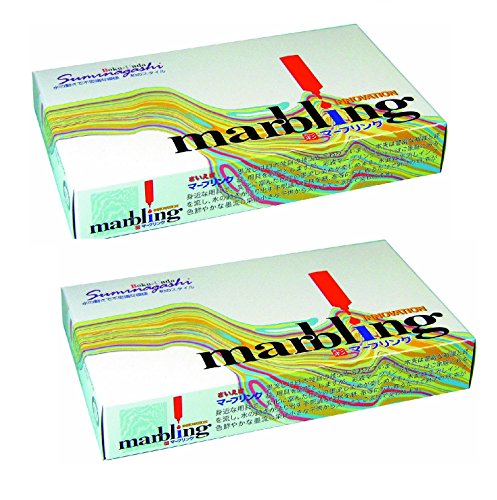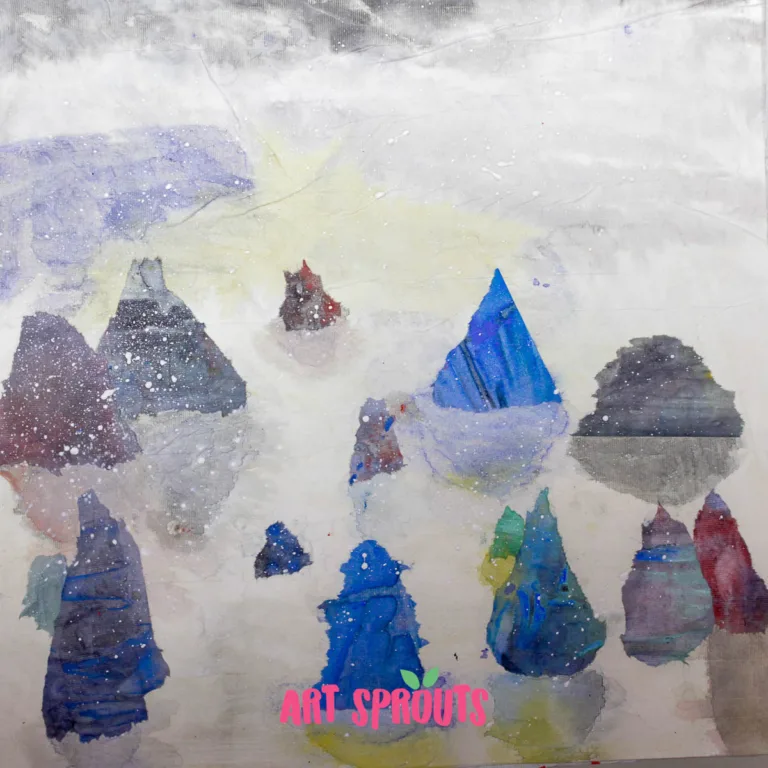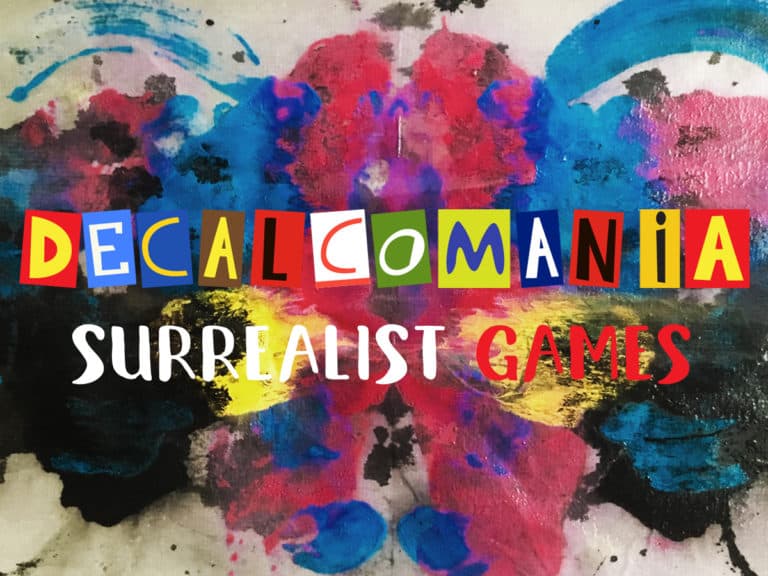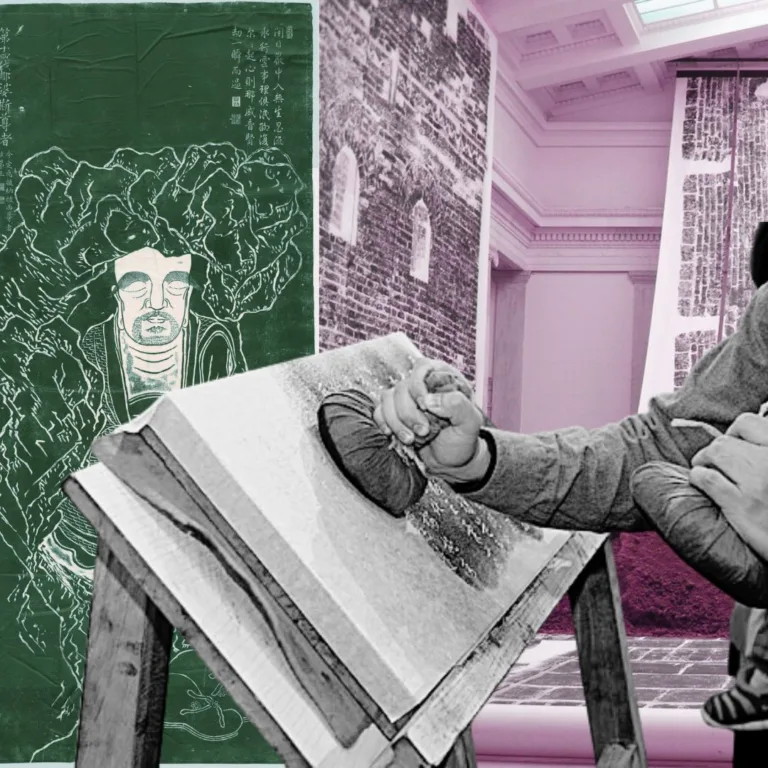Creative Suminagashi STEAM Lesson
Introduction to Suminagashi STEAM Lesson Plan
Suminagashi, meaning “floating ink,” is an ancient Japanese marbling art that marries creativity and science.
This hands-on lesson explores the beautiful intersection of art, culture, and chemistry. By learning how ink floats on water and using surfactants to manipulate the ink’s movement, students will experience both the artistic and scientific principles behind Suminagashi.
This interdisciplinary approach not only teaches students about Zen art but also provides them with a deeper understanding of scientific phenomena like surface tension and capillarity.
Read also:
- The Shift from STEM to STEAM: Why Soft Skills Are Crucial for Your Child’s Education
- How to Incorporate Art into Different Subjects Curriculums
- How Art Appreciation Fosters Critical Thinking and Problem-Solving in STEAM
Looking for more DIY techniques to try?

Bring creativity home with The Art Recipe Book! Discover easy DIY recipes like papier-mâché, slime, and salt dough, and plant the seeds for endless fun!
Floating Ink STEAM Lesson Plan

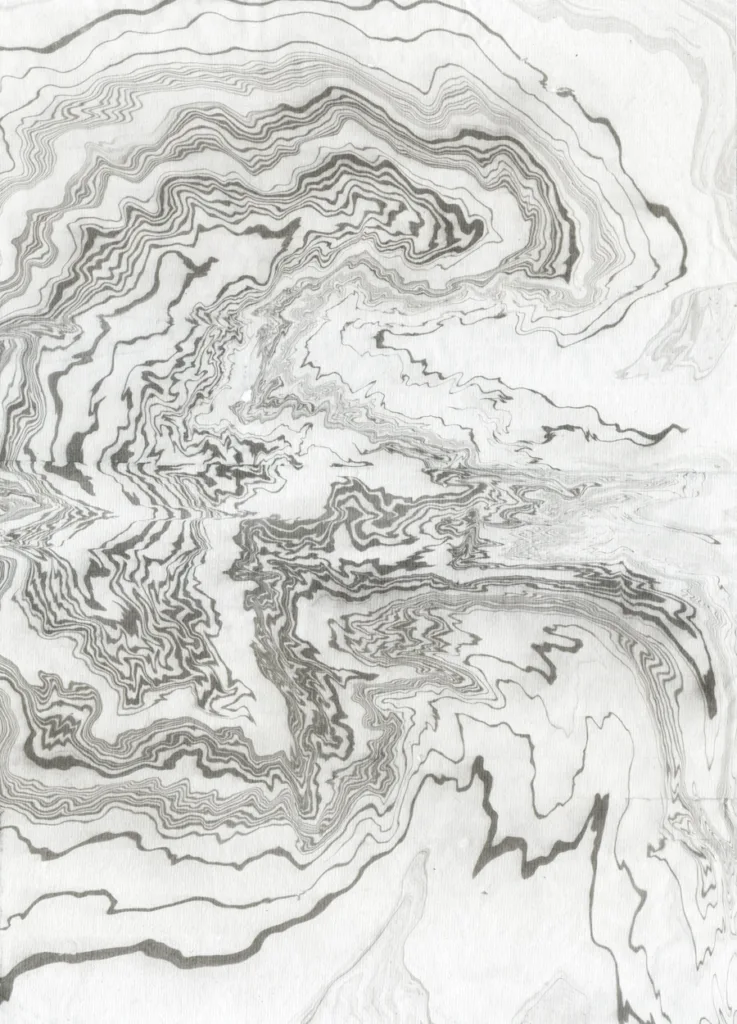
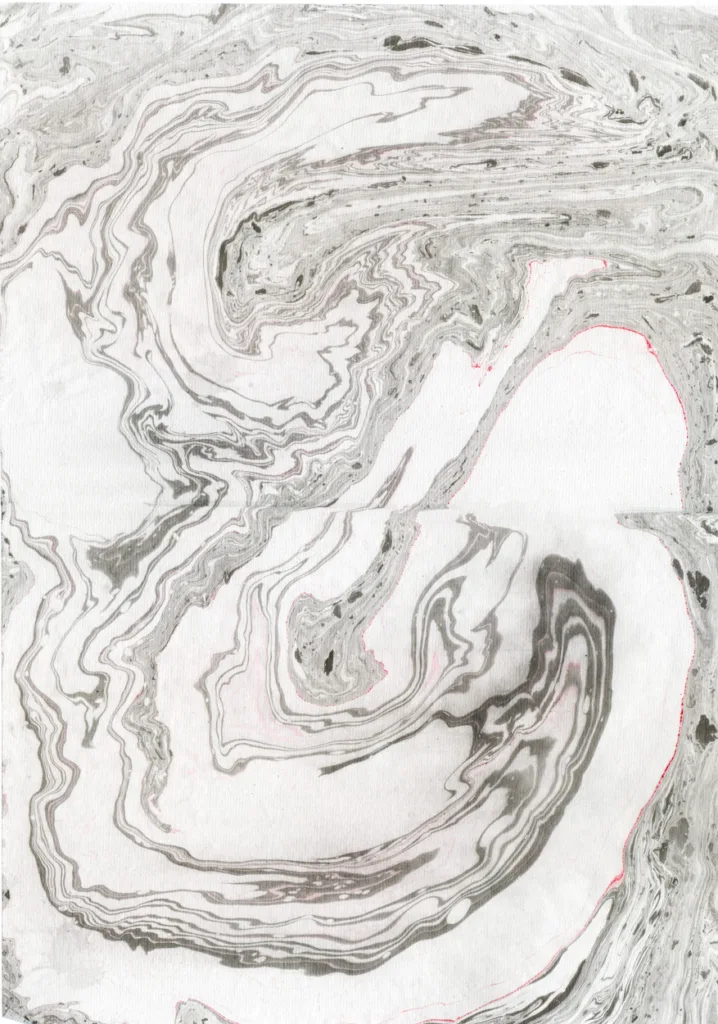
Objectives:
By the end of this session, students will be able to:
- Understand the key concepts of Zen art and its meditative nature.
- Independently create a Suminagashi print using artistic and scientific techniques.
- Explain surface tension and capillarity with relevant examples.
- Differentiate between hydrophilic and hydrophobic molecules.
- Describe emulsions and identify common emulsifying agents.
- Understand the properties of surfactants and how they affect liquids.
Subjects Covered in the Lesson
This lesson integrates several subjects, making it perfect for STEAM education:
- Natural Science (Chemistry): Understanding molecular behavior, surface tension, and emulsions.
- Art: Practicing creative processes and learning about a unique form of Japanese art.
- Culture and Society: Exploring Zen Buddhism and how its philosophies influence art and mindfulness.
Read also:
- Chinese Calligraphy for Kids: Hands-on Activities to Discover the Beauty of Chinese Calligraphy
- Chinese Knots how-to: The complete guide to Chinese New Year traditional craft
Materials Needed for the Lesson:
For the class:
- Projector (to display videos or demonstrations)
- Old newspapers, and drying racks
For each student:
- Tray with water
- Brushes (separate ones for different colors and a neutral brush for soap)
- Ink, dish soap, and water
- Xuan paper
Understanding Suminagashi: The Art and Its Origin
Suminagashi is not just a beautiful art form, but a reflection of Zen philosophy. This technique involves delicately dropping ink onto the surface of water, watching as the ink forms circles due to surface tension. By adding soap, a surfactant, these circles expand, creating mesmerizing patterns that are transferred to paper.
Zen Philosophy in Suminagashi
In Zen, the process of creation is more significant than the final result. Artists practicing Suminagashi focus on mindfulness, allowing each action to be meditative. The art is spontaneous, embracing the imperfections and fluidity of the moment. As students engage with this lesson, they not only learn about surface tension but also experience the calming, introspective nature of Zen art.
Scientific Principles Behind Suminagashi
Suminagashi serves as an excellent bridge between science and art, offering students a practical way to learn about:
- Surface tension: The elastic-like property of liquid surfaces, responsible for keeping the ink afloat.
- Capillarity: The process by which liquids move through narrow spaces, helping the paper absorb ink.
- Hydrophilic and Hydrophobic molecules: Substances that either attract or repel water, demonstrated through the ink and soap interaction.
- Emulsions and Surfactants: These agents help mix otherwise immiscible substances like oil and water, essential in spreading the ink across the water’s surface.
Surface Tension Explained
Surface tension arises because molecules at the surface of a liquid experience an inward force, creating a sort of “skin.” This is why paper clips can float on water when gently placed but sink when dropped forcefully. The same principle allows ink to spread on water without sinking.
Hydrophilic vs. Hydrophobic Molecules
Hydrophilic molecules, like salt or sugar, dissolve in water, while hydrophobic molecules, like oil, do not. By experimenting with substances like ink (hydrophobic) and soap (hydrophilic), students see firsthand how different molecules interact with water.
The Role of Surfactants and Emulsions
Surfactants like soap lower the surface tension of water, enabling oil and water to mix. In Suminagashi, soap spreads the ink across the water, helping to create the signature expanding circles. Emulsifiers, such as egg yolk in mayonnaise, work similarly by stabilizing mixtures of oil and water.
Hands-On Activity: Creating Your Own Suminagashi Print
Materials Setup for the Activity Each student should have their own tray of water, brushes, ink, soap, and paper.
Arrange newspapers and drying racks to prevent messes.


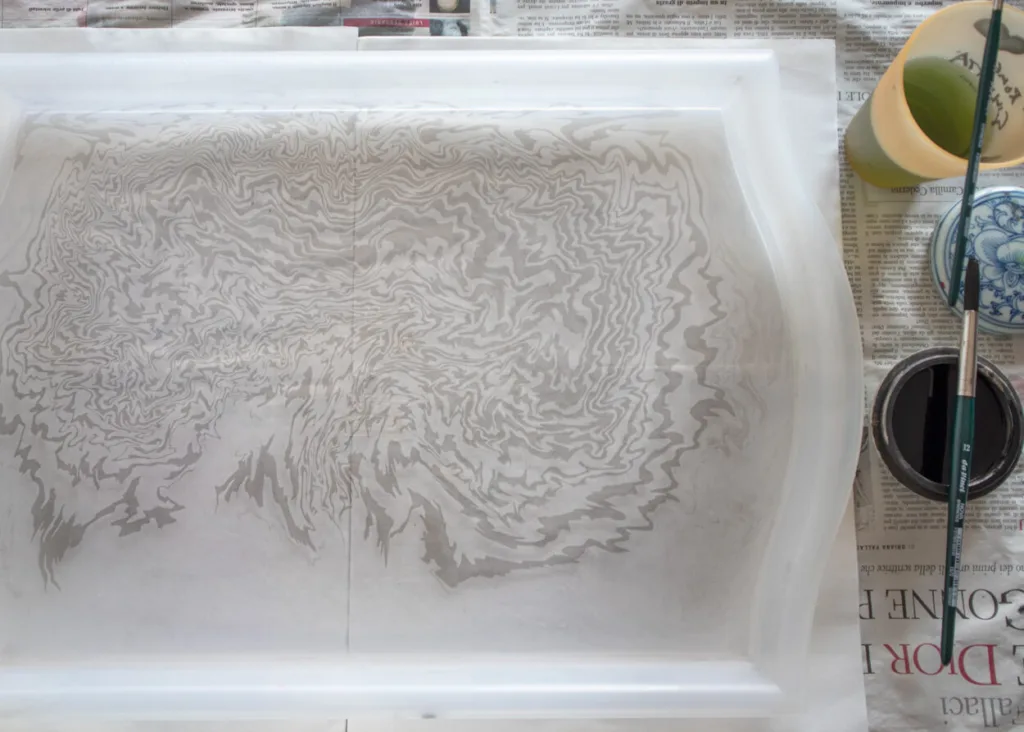
Step-by-Step Instructions for Suminagashi
- Add Drops of Ink: Gently drop ink onto the water’s surface, observing how it spreads.
- Add Soap: Add a drop of soap near the ink and watch the surfactant effect, spreading the ink into circles.
- Create the Print: Carefully place a sheet of paper onto the water to absorb the ink design.
- Dry the Print: Place the print on the drying rack to dry.
Scientific Extensions: Further Experiments in the Lesson
- Surface Tension and Temperature: Test how ink behaves in warm versus cold water to explore how temperature affects surface tension.
- Capillarity Exploration: Use sponges, different papers, or plants to observe how capillarity helps water travel through narrow spaces.

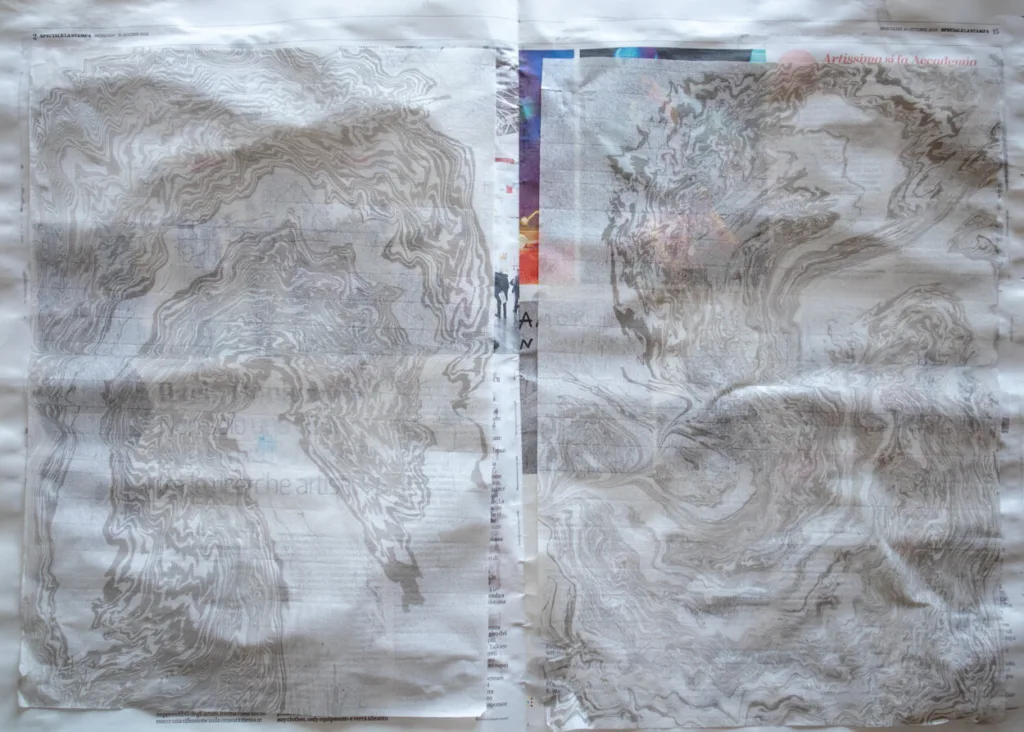
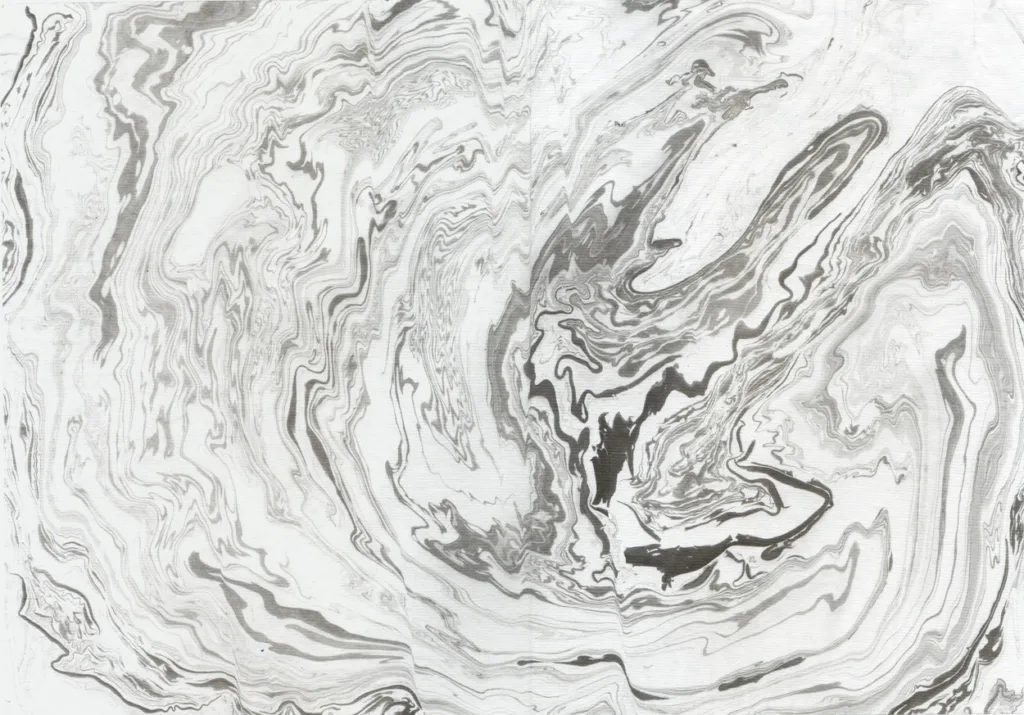
Cultural Context: Zen Art in the Classroom
Encourage students to reflect on the calming, meditative nature of Suminagashi. The process of creating art through this technique is deeply connected to Zen teachings, where mindfulness and presence are more valued than the finished artwork.
Aligning with National Core Arts Standards
This lesson fulfills multiple National Core Arts Standards, including creating works that reflect cultural traditions and using various artistic processes. It also helps students interpret art, categorizing its subject matter through the lens of Zen philosophy.
Conclusion: The Fusion of Art and Science in Suminagashi
Suminagashi art offers a unique, hands-on way for students to explore both creativity and scientific concepts. By engaging in this lesson, students not only create beautiful, personal artwork but also deepen their understanding of molecular behavior, surface tension, and Zen culture.






